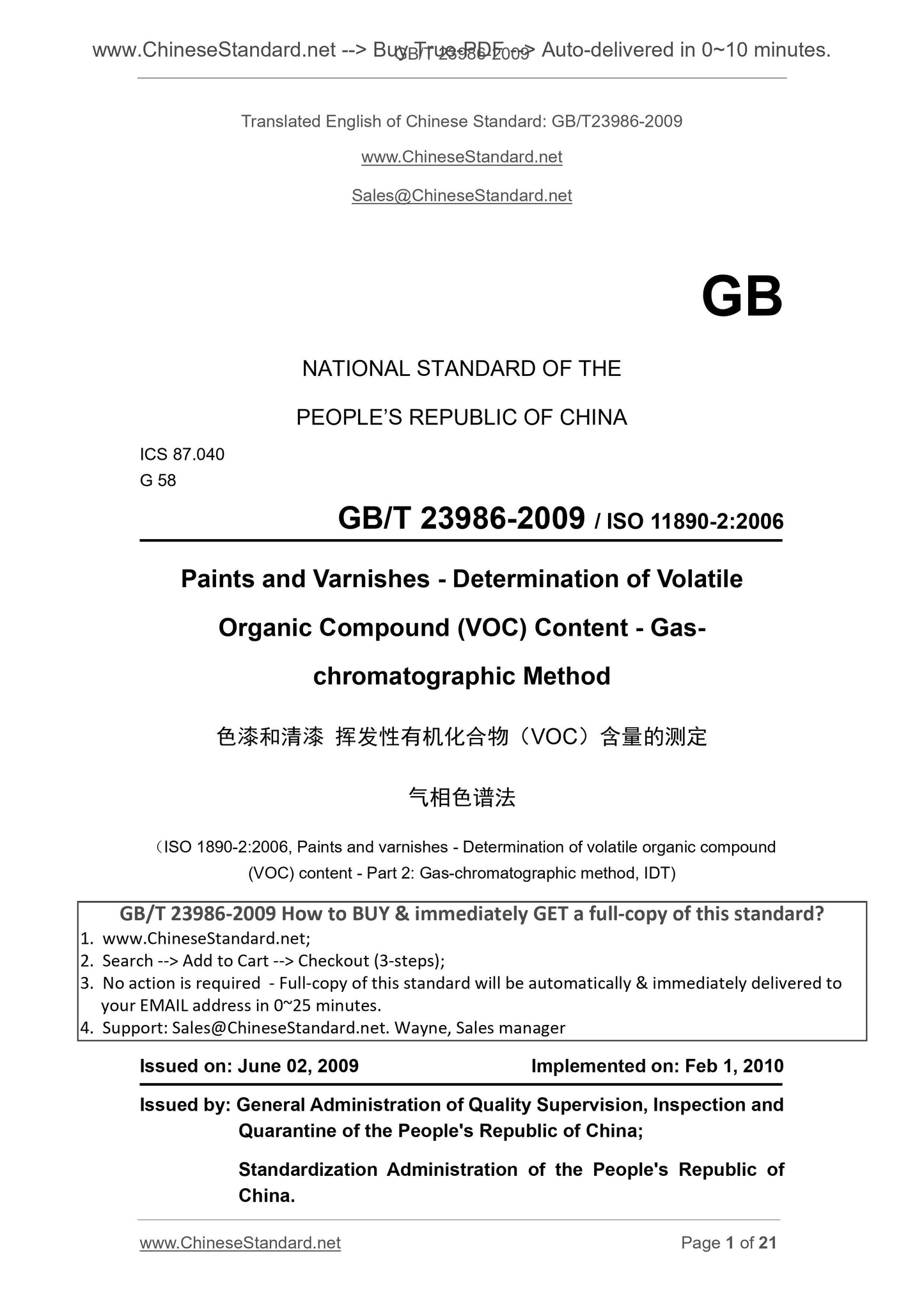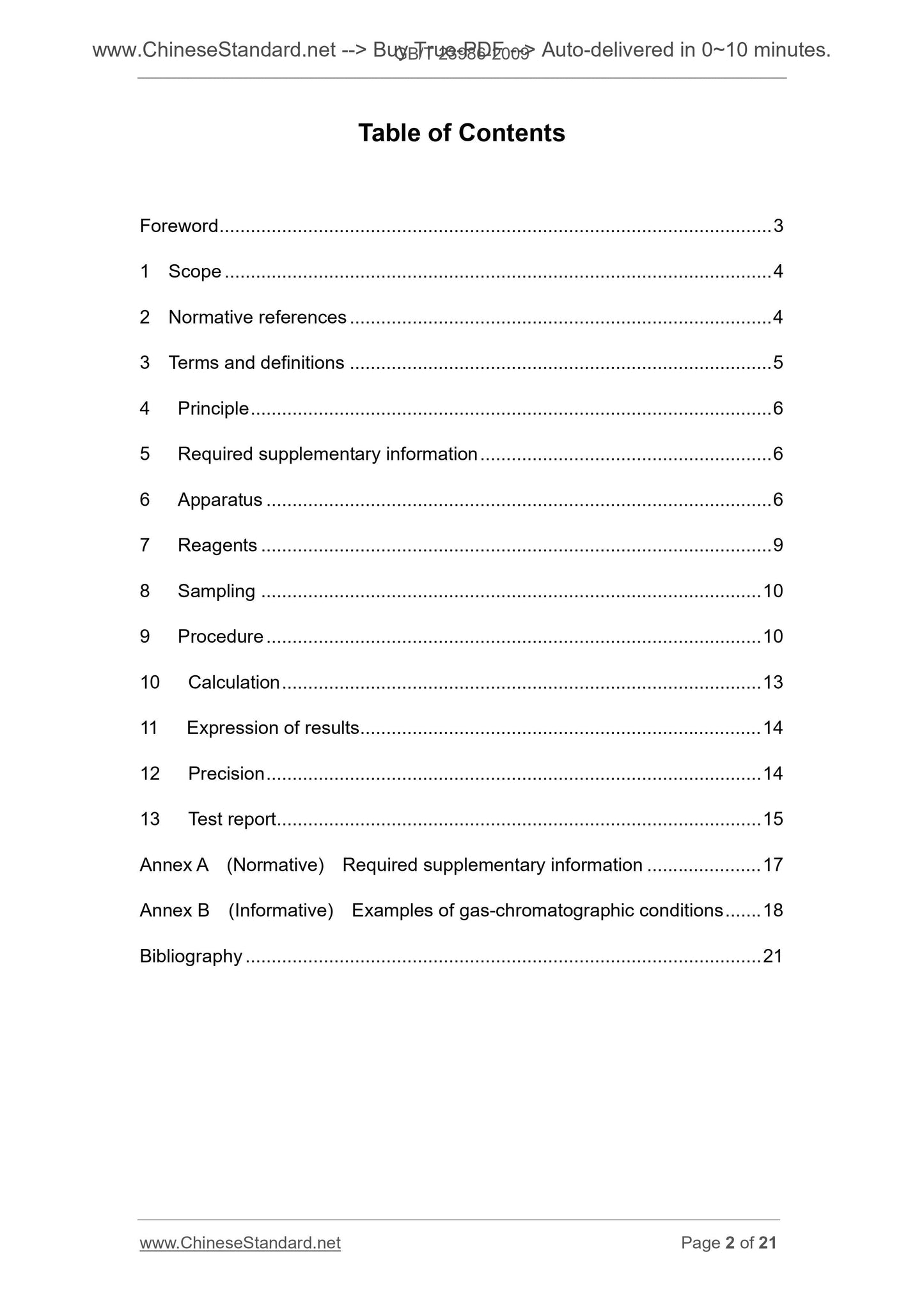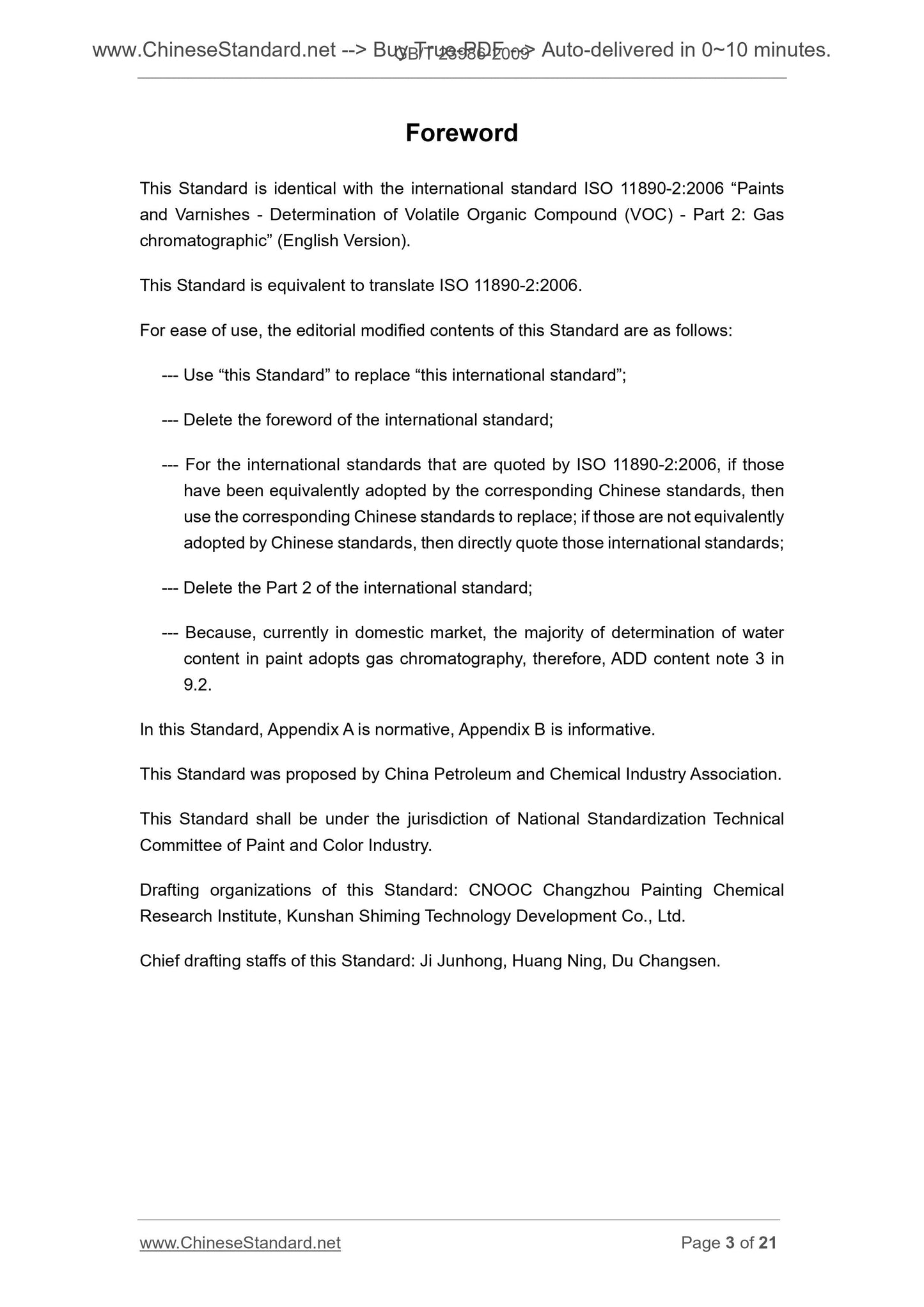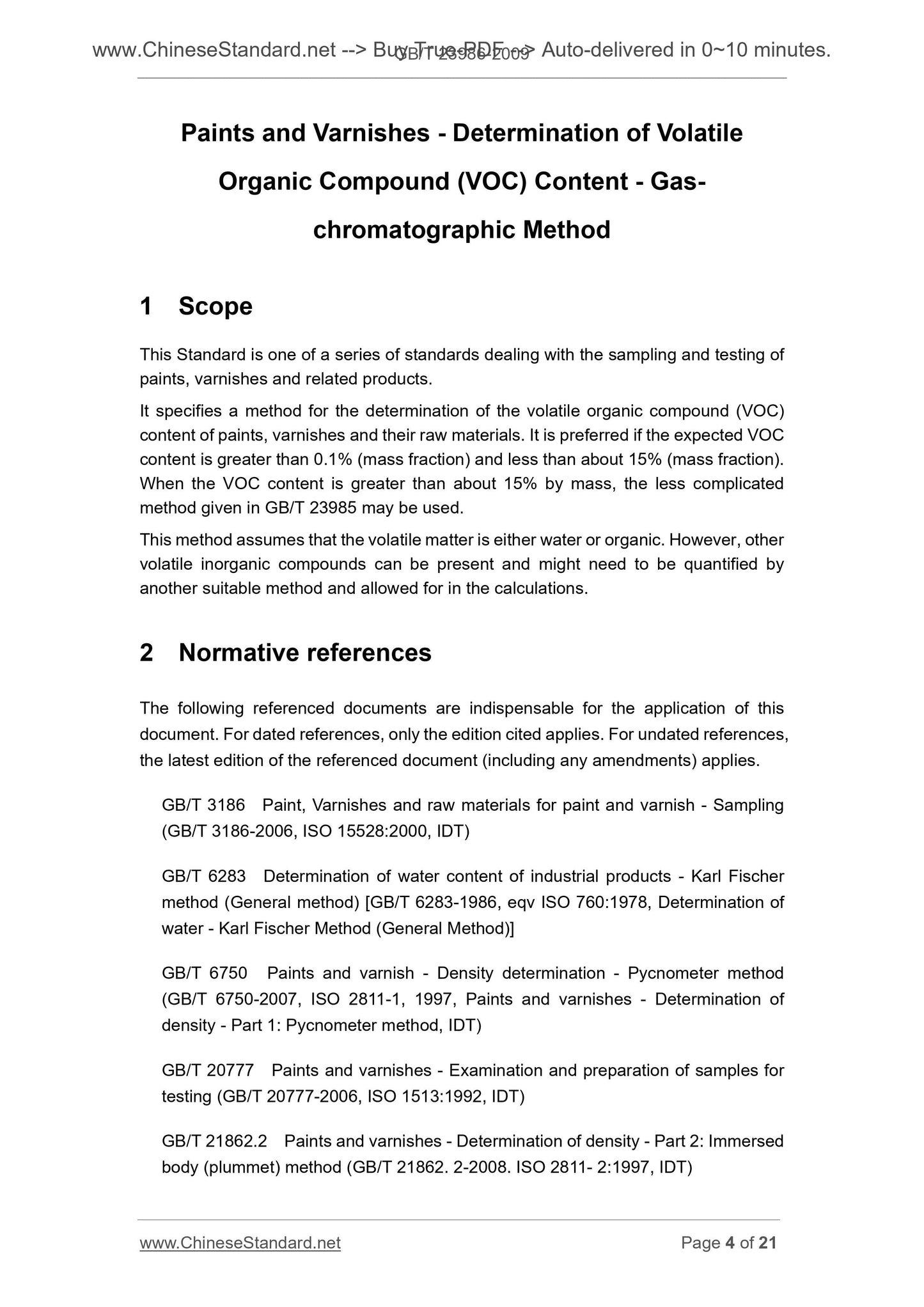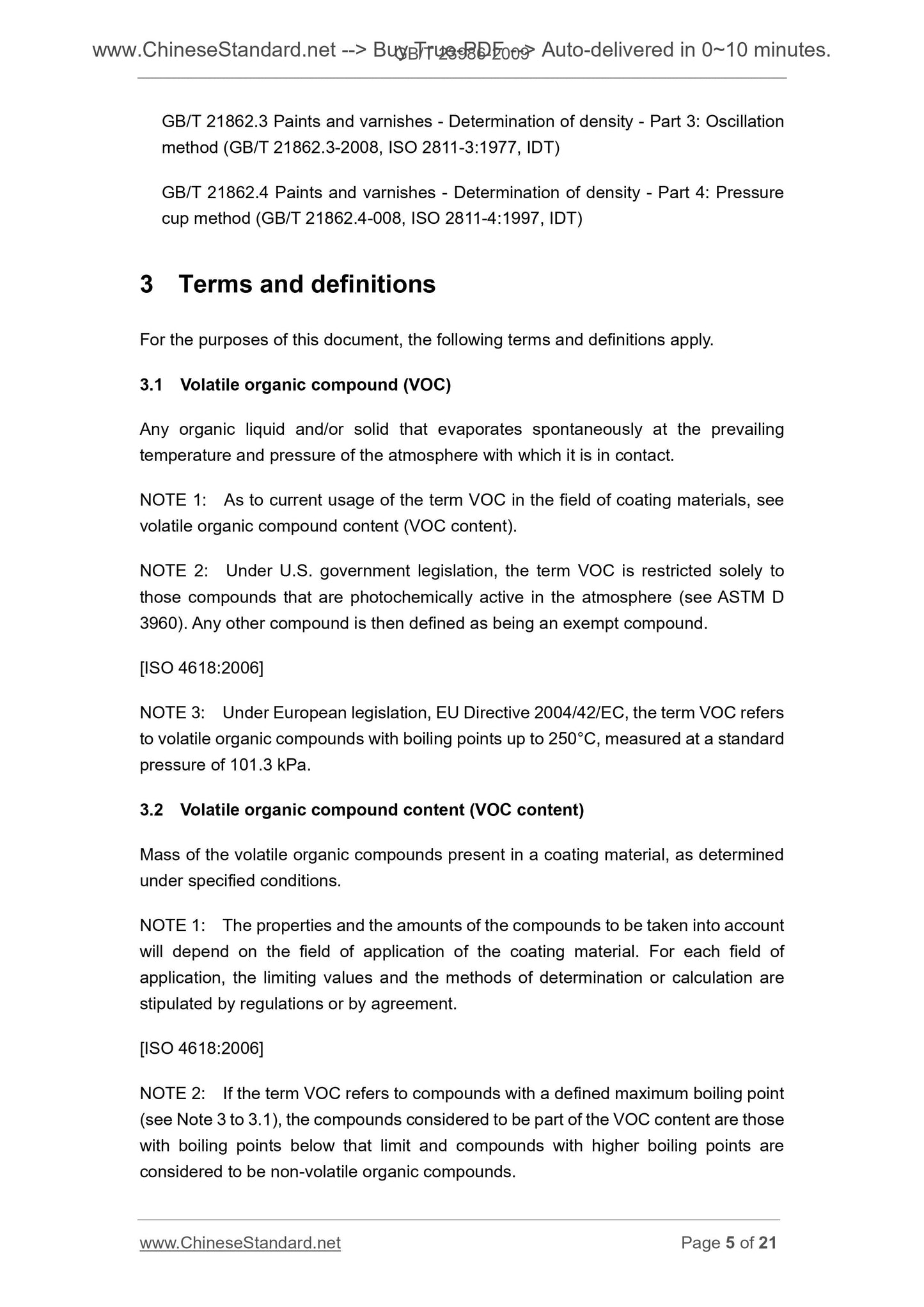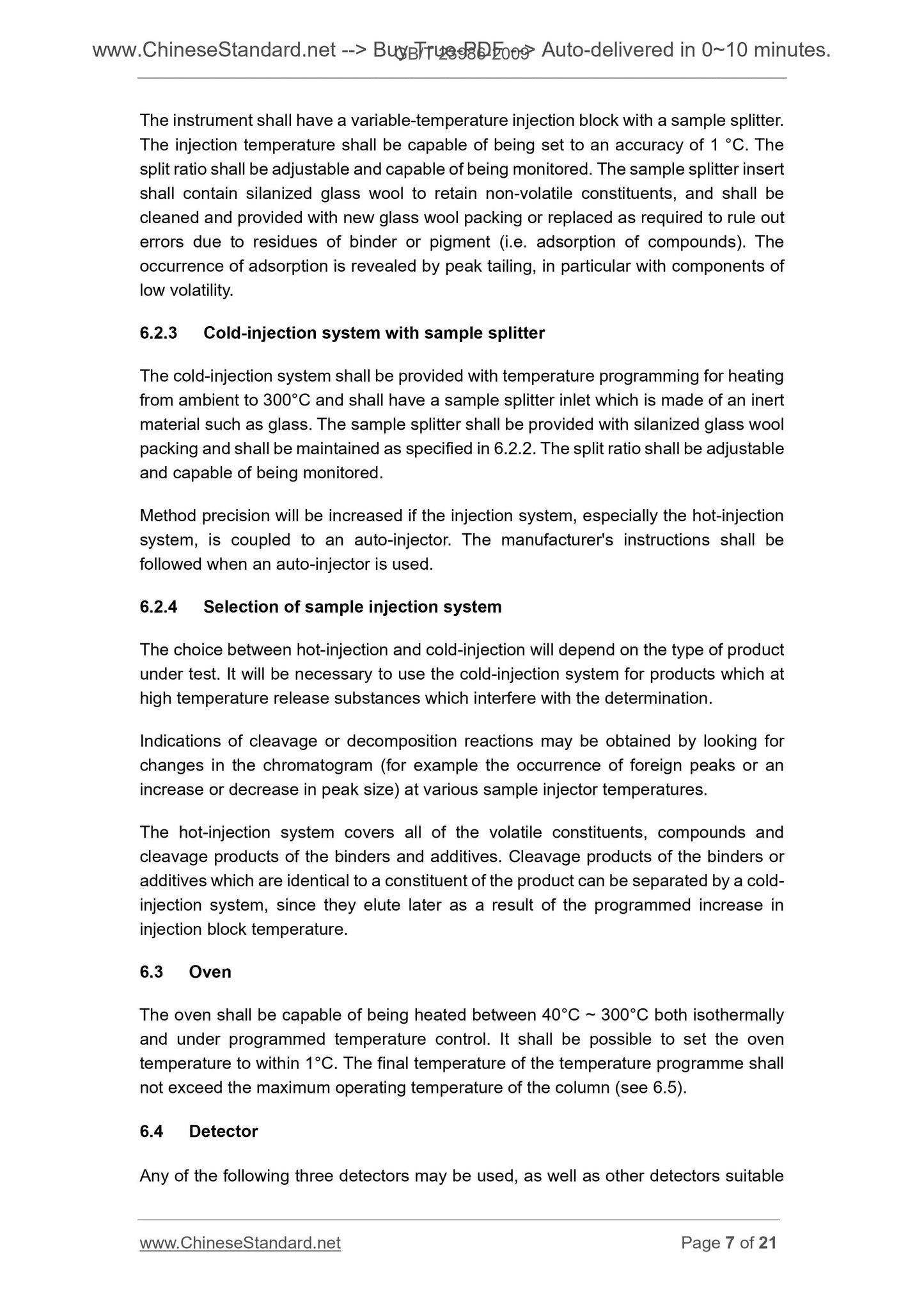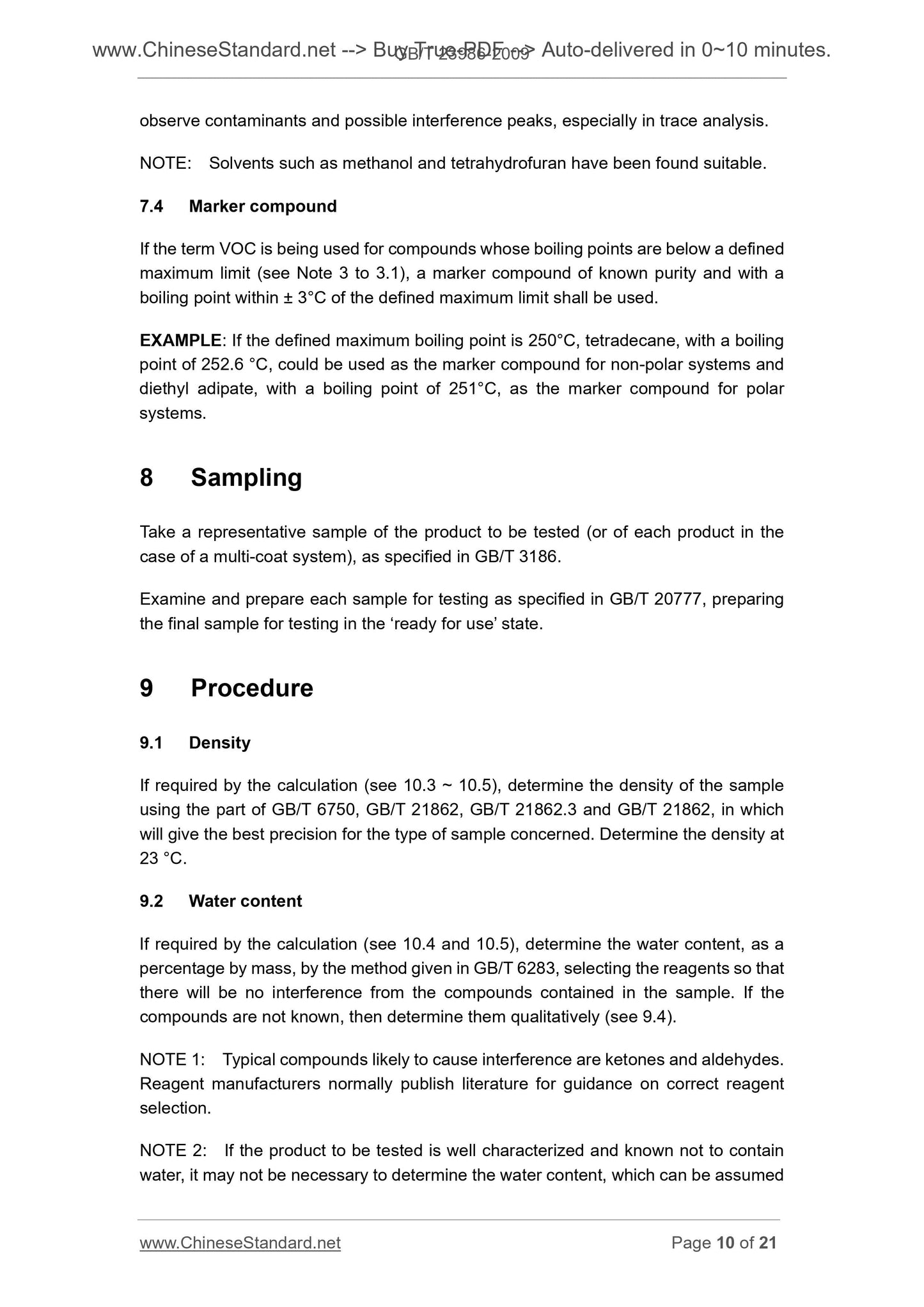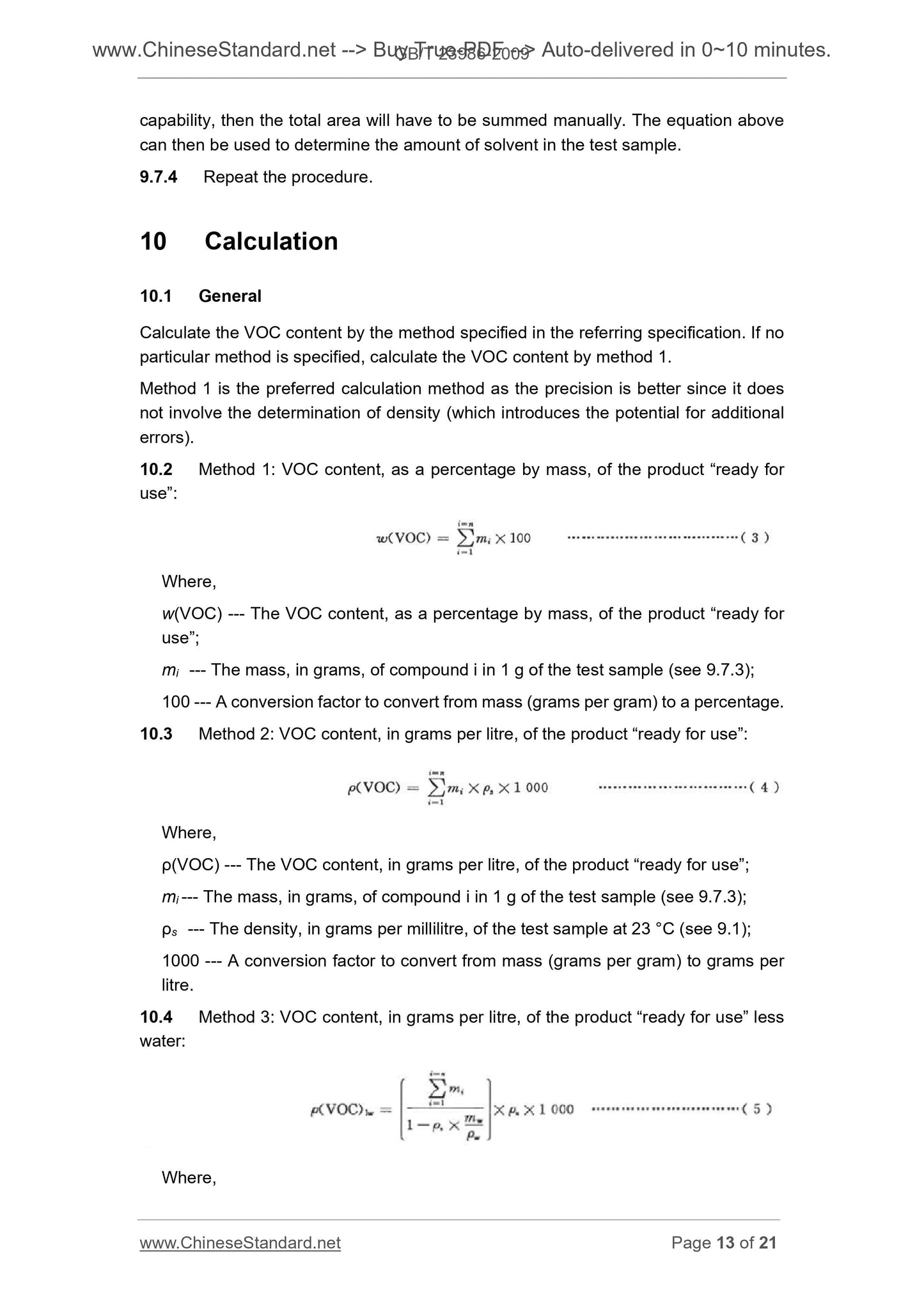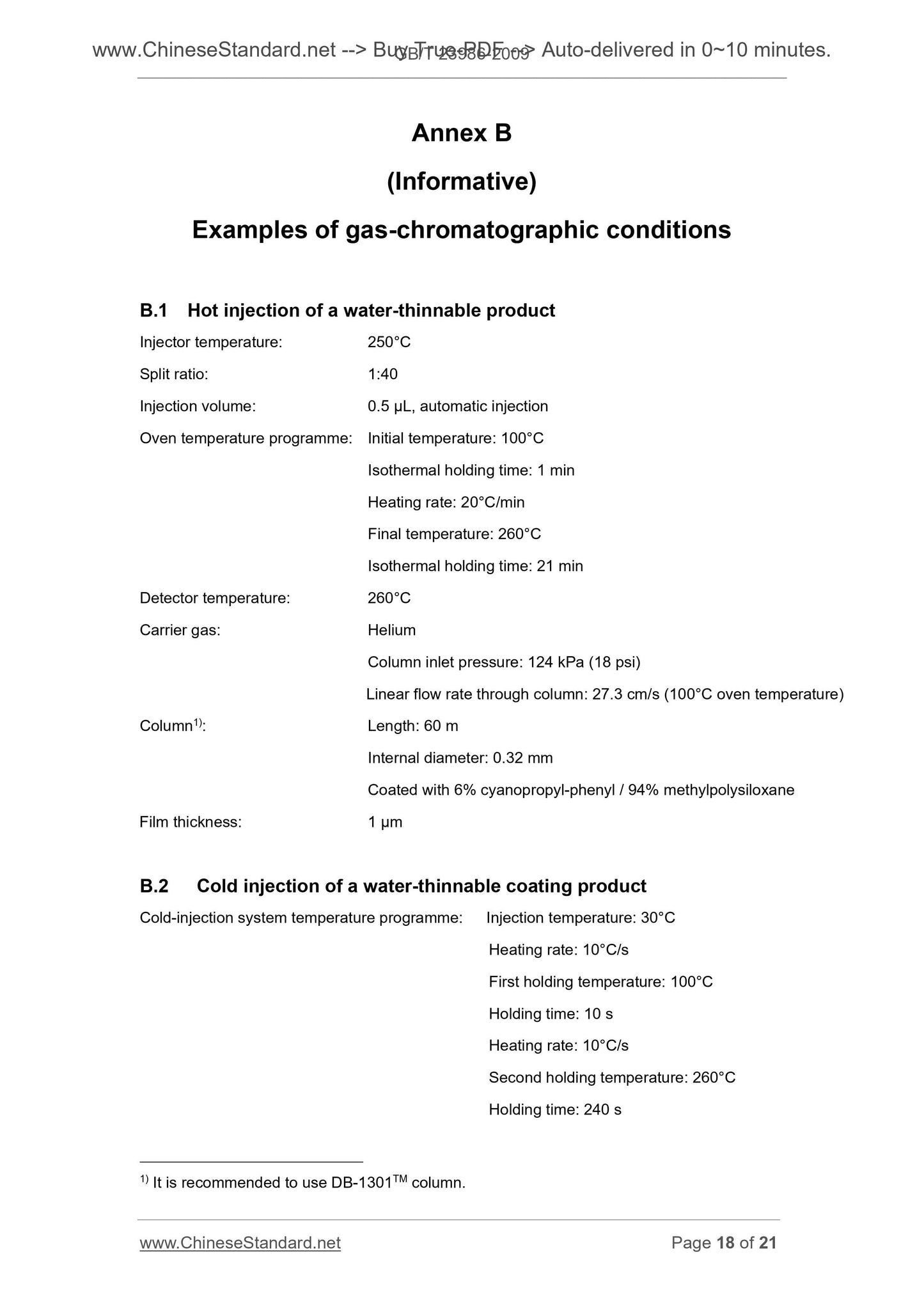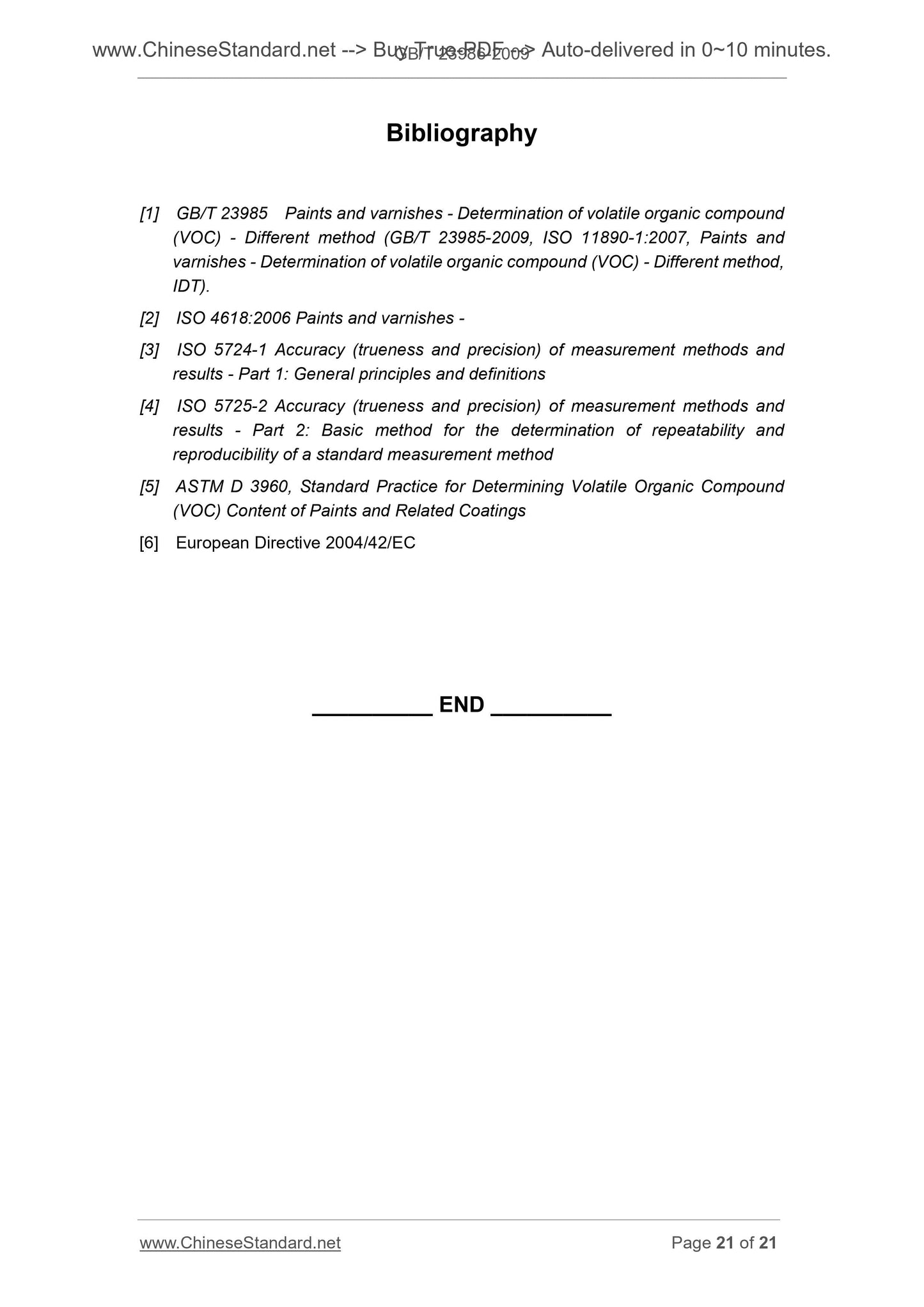1
/
of
10
www.ChineseStandard.us -- Field Test Asia Pte. Ltd.
GB/T 23986-2009 English PDF (GB/T23986-2009)
GB/T 23986-2009 English PDF (GB/T23986-2009)
Regular price
$85.00
Regular price
Sale price
$85.00
Unit price
/
per
Shipping calculated at checkout.
Couldn't load pickup availability
GB/T 23986-2009: Paints and varnishes -- Determination of volatile organic compound (VOC) content -- Gas-chromatographic method
Delivery: 9 seconds. Download (and Email) true-PDF + Invoice.Get Quotation: Click GB/T 23986-2009 (Self-service in 1-minute)
Newer / historical versions: GB/T 23986-2009
Preview True-PDF
Scope
This Standard is one of a series of standards dealing with the sampling and testing ofpaints, varnishes and related products.
Basic Data
| Standard ID | GB/T 23986-2009 (GB/T23986-2009) |
| Description (Translated English) | Paints and varnishes -- Determination of volatile organic compound (VOC) content -- Gas-chromatographic method |
| Sector / Industry | National Standard (Recommended) |
| Classification of Chinese Standard | G50 |
| Classification of International Standard | 87.040 |
| Word Count Estimation | 20,228 |
| Date of Issue | 2009-06-02 |
| Date of Implementation | 2010-02-01 |
| Quoted Standard | GB/T 3186; GB/T 6283; GB/T 6750; GB/T 20777; GB/T 21862.2; GB/T 21862.3; GB/T 21862.4 |
| Adopted Standard | ISO 11890-2-2006, IDT |
| Regulation (derived from) | Announcement of Newly Approved National Standards No. 8, 2009 (No. 148 overall) |
| Issuing agency(ies) | General Administration of Quality Supervision, Inspection and Quarantine of the People's Republic of China, Standardization Administration of the People's Republic of China |
| Summary | This standard is related to Paints, varnishes and related products, sampling and testing a series of criteria. This standard specifies a method for determining Paints, varnishes and their raw materials of volatile organic compounds (voc) content method is mainly applied to the top of voc content greater than 0. 1% (mass fraction), less than 15% (mass fraction) of the sample. When the VOC content greater than 15% (mass fraction), can be used GB/T 23985 specified in a relatively simple way content was determined. This method assumes that the water or organic volatiles. However, there may be other volatile inorganic compounds, which may need to use other methods for quantitative determination of an appropriate and considered in the calculation deduction. |
Share
